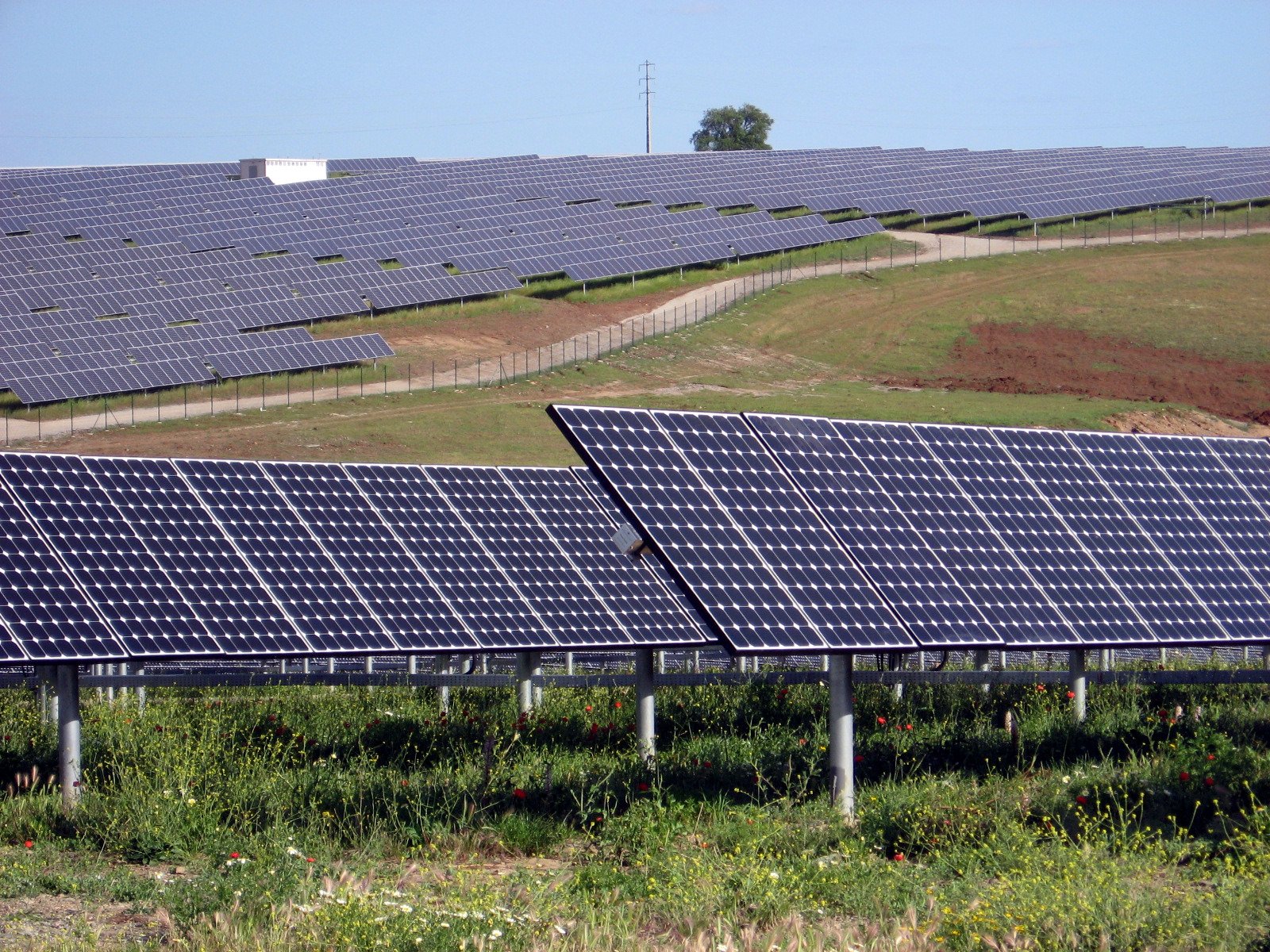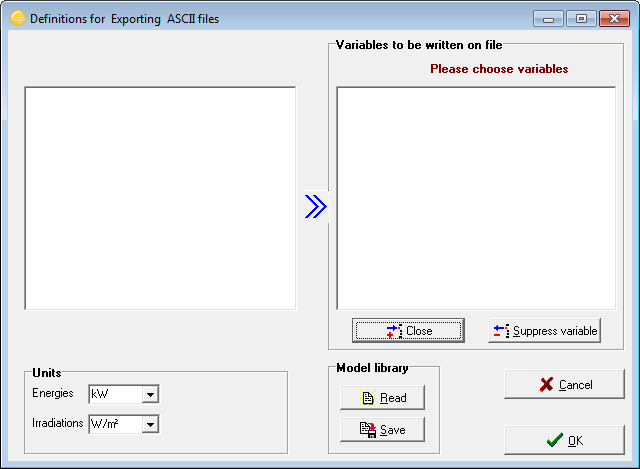-
Posts
873 -
Joined
-
Last visited
Posts posted by dtarin
-
-
I have not. What version?
-
What is the inverter?
-
If you are trying to import a PAN file, place it in your directory ...\PVsyst6xx_Data\ComposPV\PVmodules, close PVsyst, and reopen (if you have it open). It will be listed in your module list now.
-
I dont quite understand what the difference is with using cells versus modules in series, but if you use modules (ie 18 modules in series, 10 in parallel), the calculation is much different.
-
Thanks Andre.
It is not clear to me a specific tool is necessary. All of the specific tools for the different meteo sources are already in place. I think all that is missing is the automation end from PVsyst and how to handle the inputs. I think on the PVsyst end, perhaps the only modifications are what to name the file, and which files to select. The data source is the same for all files imported, and the time zone can be retrieved from the web service for each file. If a user directs the program to a directory containing N TMY3 files, and selects TMY3 as the data source type, perhaps PVsyst can use the file name as the site name and weather file name, and simply step through the process for each file.
-
Hello,
Is it possible to execute a batch run using different monthly weather profiles, instead of a single value?
-
Hello,
I am using version 6.6.3 and I have noticed that when I set a pitch and fill a zone, not all rows are set with the pitch assigned. Please see attached image. Can you provide any assistance or insight into what is occurring?
Edit: It seems this occurs when automatic length is used. We can see in the 'zone filling' picture with automatic length selected that the rows still do not end up equal length. The second image 'zone filling 2' has this option unchecked, and the zone fill is as it should be, with rows equal length and all with the appropriate spacing.
-
-
For the calculation of the backtracking angle, PVsyst has to use the pitch and wdth of 2 adjacent trackers.
This is only possible with trackers of a same tracker object (array of trackers). When you have several arrays of trackers, PVsyst will choose the more "narrow" as reference.
I read this as stating that PVsyst requires two trackers to be at the same orientation (no misalign or azimuth changes). If I have two trackers of the same orientation, and another two that are misaligned which are adjacent to the first two, is this acceptable and able to be properly captured? See image for reference.
Thank you,
-
I don't understand what you are doing.
By the way, you cannot use the backtracking strategy with a misalignment of the trackers.
See the FAQ How is defined the Tracking Axis azimuth ?
Andre,
Backtracking with misalignment isn't forbidden in PVsyst. Are you saying that if it is selected, the results are not accurate?
-
-
-
I think he meant that we would like to misalign the modules to the eastern direction. Entering a positive value for misalign points them to the west. Entering a negative value for misalign points them east, but this it not allowed. I also would like to misalign to the eastern direction, but do not know how (or if it is possible) to do so.
-
I have asked to several different inverter manufacturers and all of them have answered that there will be an active power reduction due to a PF less than 1, only in case of overload
This is exactly what I said in my first answer to this post.
The active energy production will not be affected, until the Pnom limit (in kVA) will be reached. The power factor acts as a diminution of the nominal output power (Pnom) expressed in terms of active energy [kW].
In your example: Pnom (apparent) = 60 kVA => with 85% PF Pnom (active) = 51 [kW] will be applied for limiting E_Grid when running the symulation.
PVsyst works in this way of course.
Andre,
Will PVsyst work in the same way with inverters which have a temperature de-rate curve established in the OND file, such that the entire de-rate curve is multiplied by PF?
-
Hello,
It would be extremely useful if it were possible to import multiple meteo files at once and automate the creation of multiple MET and SIT files.
-
-
-
Hello,
I have a system with multiple orientations but only one sensor mounted for one orientation collecting POA irradiance at a one minute interval. Is it possible to use this POA irradiance to calculate GHI, and then use this GHI to calculate POA for other orientations? Or can I convert directly from one POA to another?
-
It would be helpful to add a timer to the hourly simulation progress, or include it in the output file(s). For long simulations, it would help budget time and plan work accordingly.
-
-
-
Hello,
I am running a simulation with an OND file that had a night loss parameter. I set this value to zero and saved the OND file, variant, and project. When I run a batch calculation though, the runs are all done with night loss still there. When I run a single simulation, the night loss is not there in the 8760 data.
Thank you.
-
There is no straight answer. Dimensions for a table depends on different factors like cost, the conditions of the ground, type of racking, type of modules, size of system, etc. Sheds will give you a more accurate estimate when partitioning into strings and calculating electrical loss due to electrical effect; the table method will slightly underestimate this. Tables give more flexibility in being able to position on top of ground objects, you can use them in zones, etc.
If you zone is very large, it could be why it is crashing. Break it up into N zones, get one section into position, then work on another. Once created, you can copy all the modules and paste and position. Also if you provide images it can help to provide an answer.
-
I am referring to other parameters of a PV table/shed, like the inactive band size or module spacing.







Inverter Clipping Losses
in Simulations
Posted